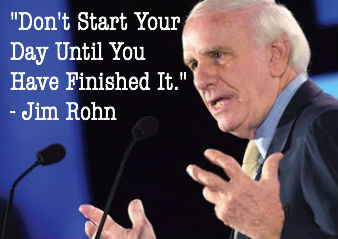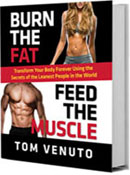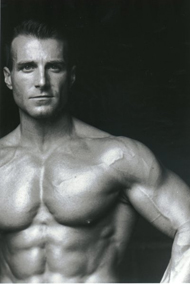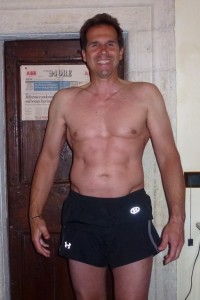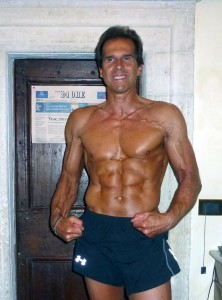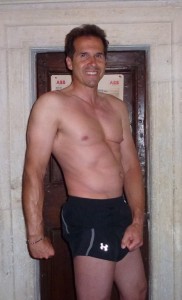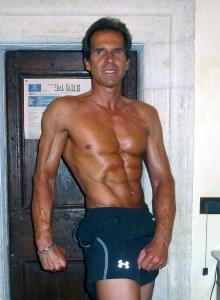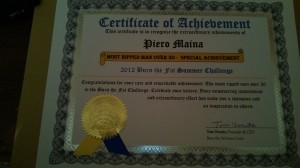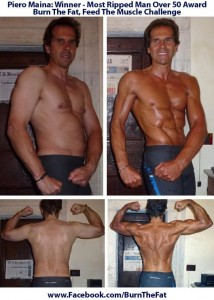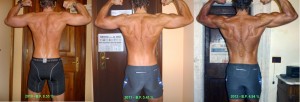Originally published on HVMN by Nate Martins.
Muscle Recovery: Essential to Your Next Workout
The moment every athlete wants to avoid.
POP!
A muscle gives at the gym or on the track, leading to weeks of rehab. Sometimes it’s not even a single moment, but rather, countless hours of overuse that leads a muscle to strain or tear.
To avoid rehab, athletes need to be thinking about pre-hab. Get ahead of an injury before it happens.
Muscle recovery should be part of every training plan (specifically post-workout). But there are multiple strategies athletes can employ that lead to muscle health–even things like diet can impact how your muscles recover. Knowing what to do, and when to do it, can help avoid the injuries that’ll set you back weeks.
Why is Recovery Important?
An important goal of every training session is to break down muscle. Without recovery, a significant portion of that work might be a waste of time. So, what exactly happens during recovery? That’ll depend on the person and activity, but generally, four different things are happening while you’re resting.
Synthesis of protein: This is what leads to muscle growth. During recovery is when most muscle is built, because muscle protein synthesis increases by 50% four hours after a workout (like resistance training).1
Rebuilding of muscle fibers: Microtears in muscle fibers are a normal part of exercise, happening when we put strain on our muscles. Recovery allows these fibers to heal and become stronger during that process.
Fluid restoration: We sweat (and lose a lot of fluid through exhaled air).2 Hydrating before, during and after a workout is important, because these fluids help deliver nutrients to organs and muscle through the bloodstream.
Removal of metabolic waste products: Acids (via that pesky little proton associated with lactate) accumulate during a workout, and recovery gives the body time to restore intramuscular pH and reestablish intramuscular blood flow for oxygen delivery (among other things).
While you’re resting, your muscles kick into overdrive.
Recovery can be attacked several ways–some may be surprising, because they don’t directly target the muscles themselves. By approaching recovery through a few different avenues, it can be optimized.
Consuming Your Way to Recovery
It may not seem obvious, but a combination of hydration, diet, and supplements can do wonders for the muscles.
Hydration: During and After Exercise
Drinking fluids is a mantra repeated by coaches everywhere for good reason: muscles are 75% water.
Before and during exercise, hydration is key to maintaining fluid balance and can even improve endurance (it’s equally important to not over-consume water as well).3,4 But post-workout, consuming enough water is vital to helping digest essential nutrients and repairing damaged muscle.
The sought after protein resynthesis requires muscles be well-hydrated. And coupled with post-workout eating, saliva–which is comprised mostly of water–is necessary to help break down food, digest, and absorb all the nutrients you’re hoping to receive. In one study, adequate hydration after a 90-minute run on a treadmill showed significantly faster heart rate recovery;5 this illustrates that hydrated bodies recover from exercise-induced stress faster.
Don’t rely on the age-old test of urine to determine if you’re hydrated; that has been debunked.6
A good rule of thumb is to weigh yourself before and after a workout, drinking 1.5x the amount of weight lost.
Diet: Protein, Carbohydrates and Fat All Work Together
Nailing the right nutrition strategy post-workout can encourage quicker recovery, reduce soreness, build muscle, improve immunity and replenish glycogen.
Your next workout starts within the hour your last workout ended.
Since exercise triggers the breakdown of muscle protein,7 it’s beneficial to consume an adequate amount of protein after a workout. Protein provides the body with necessary amino acids needed to repair and rebuild, while also promoting the development of new muscle tissue.8
Good sources of protein include: whey protein, whole eggs, cheese and smoked salmon.
Carbohydrates have a similarly important effect–they replenish glycogen stores. The type of exercise will depend on how much carbohydrate is needed. Consuming about 0.5 – 0.7 grams of carbohydrate per pound of bodyweight within 30 minutes of training can result in adequate glycogen resynthesis.7 Insulin secretion promotes glycogen synthesis, and is more stimulated when carbs and protein are consumed simultaneously.9
Carb sources are everywhere; but look to slow-release sources such as sweet potatoes, fruit, pasta and rice.
Fat shouldn’t be the main focus of an after workout meal, but should be part of it. Good fat sources include avocados and nuts. Milk is also a popular choice; one study found whole milk was more effective at promoting muscle growth than skim milk.10
Supplements: Protein, BCAAs and Omega-3s Build Muscle and Reduce Inflammation
We’ve outlined which supplements runners should take; it’s best to focus on protein, BCAAs and omega-3s–all these supplements help optimize muscle recovery.
While most athletes think protein is best left to bodybuilders, protein can repair the muscle damage that occurs during a workout, reduce the response from the “stress hormone” cortisol, and speed up glycogen replacement. Protein also accelerates the resolution of muscle inflammation.11,12
Whey, casein and soy are some of the most popular proteins. Whey is absorbed the fastest by the body, and is largely considered the most effective protein for muscle protein synthesis.13 Casein protein is geared more toward long-term recovery because it takes hours to absorb. Try introducing whey immediately post-workout, while using casein protein before bed; protein ingestion before sleep has been shown to stimulate muscle protein synthesis.14
Serious athletes should be taking about one gram of protein per pound of bodyweight.
If someone doesn’t consume enough protein, branched-chain amino acids (BCAAs) can be a useful supplement.
Amino acids are the building blocks of protein. During exercise, the body breaks down protein into amino acids; those are absorbed and transported through the body to create new proteins that encourage building muscle. BCAAs help enhance muscle protein recovery by introducing more amino acids into the body. They preserve muscle glycogen stores, which fuel the muscles and minimize protein breakdown. Studies show BCAAs as effective for muscle recovery (as well as immune system regulation).15
Omega-3s, found in fish oils, have anti-inflammatory properties that help sore muscles.16 Kado-3, by HVMN, is a supercharged krill and fish oil stack designed to assist daily brain and body metabolism. Ingredients in Kado-3 work together; like astaxanthin oil (a powerful antioxidant) to fight against the buildup of free radicals, and Vitamins K and D to protect bone health.17,18,19
HVMN Ketone can also help muscle recovery. Those using HVMN Ketone have seen decreases in the breakdown of intramuscular glycogen and protein during exercise when compared to carbs alone.20 It also expedited the resynthesis of glycogen by 60% and protein by 2x when added to normal carb / protein post-workout fuel.21,22
Resting Your Way to Recovery
Rest should be accounted for in any training program.
Sleep: A Necessary Reset
On its face, sleep should be the easiest way to recover. One study found that lack of sleep can lead to muscle degradation.23 But many find it difficult to get the ideal seven-to-nine hours per night.
Sleep improves other facets of health that tangentially affect muscle recovery; the central nervous system (CNS) also recuperates during sleep, which is important for muscles, because the CNS triggers muscle contractions and reaction time. Hormones like cortisol and testosterone, which produce protein synthesis, are also working while we sleep.
To help optimize sleep, it’s important to set a routine.
Our screens can negatively impact sleep,24 so 60 – 90 minutes of screenless time before bed can do wonders. The blue light emitted from our devices tricks the brain into thinking it’s daytime and we need to be awake, decreasing our natural melatonin.
It’s also important to create an optimal environment for sleep. Things like blackout curtains, a cooler temperature setting in the bedroom, or a quality mattress can all encourage better, more restful sleep.
Rest Days: Muscles Don’t Take Breaks, But You Should
On a much smaller scale, what’s happening during sleep is also happening on rest days. Work rest days into your training program because they give the body time to repair tissues that have been broken down.25
Depleted muscle energy stores, micro-tears, fluid loss–all the things that happen during a workout need time to recuperate and grow stronger.
Recovery time depends on your specific routine. Runners can have an especially difficult time doing this. For highly active runners who log miles six days per week, they should also incorporate recovery runs. About half of these runs should be at recovery pace, a slower less-strenuous pace that allows the body to recycle lactate as it’s produced. By increasing blood flow, recovery runs may actually accelerate the recovery process.
Also try to avoid intense workouts or hard runs on back-to-back days. Complete rest days vary by person, but a good goal is one or two rest days every week or ten days. Injury-prone athletes may increase the number of complete rest days during this period.
Techniques & Exercises for Recovery
Let’s get into the specifics of what you can do to help the body recover faster. By using exercises targeted at certain muscles, not only will those muscles recover faster–they’ll also get stronger in the process.
Active Recovery: Getting Stronger and Building Muscle
This type of recovery focuses on exercise intensity at low-to-moderate levels. Studies have shown that it’s best for the performance of endurance athletes.26 Active recovery is successful mostly due to its ability to more rapidly remove blood lactate, facilitating blood flow and giving the body the ability to process excess lactate produced during periods of intense exercise.27
Cross training is also a great way to engage in active recovery while enhancing aerobic fitness without putting the body through the same stress as your normal workouts. Try:
- Cycling: The motion is similar to running without the joint impact. Ride at an easy pace in the low-intensity zone (around 120 – 140 heart rate)
- Yoga: A beginner’s class should do just fine. Practicing basic yoga through online videos is sufficient, using poses such as sun salutation (to boost circulation and release tightness) and warriors one and two (to activate thigh and calf muscles while helping stretch hips)
- Plyometrics: Even 15 – 30 minutes of bodyweight exercises can help boost circulation while stretching muscles. They’ve even been shown to increase sprint performance.28 Try exercises like planks, calf raises and lunges
Ice Baths: Taking the Plunge
Some athletes and coaches swear by ice baths, with trainers mandating post-practice cold water immersion (CWI). They consider ice baths essential to helping tired muscles, and feeling better for the next intense training sessions.
The idea here is that cold therapy constricts blood vessels and decreases metabolic activity, reducing swelling and tissue breakdown, flushing metabolic debris from the muscle.
But one study showcased that the “hypothesized physiological benefits surrounding CWI are at least partly placebo related.”29 This suggests that if you think ice baths help, then they may have a beneficial impact on recovery and subsequent training.
If you’d like to try an ice bath, fill a tub or large container with water, enough to submerge your hips. Add enough ice so the temperature of the water drops to about 55 degrees. Then sit in the bath for about 15 minutes.
Stretching & Foam Rolling: Increase Range of Motion
Stretching is important both before and after a workout because exercise can shorten muscles, decreasing mobility. Stretching helps flexibility, allowing muscles and joints to work in their full range of motion.30 One study found that hamstring flexibility led to increased muscle performance.31
Post-workout stretches are often forgotten by athletes in a rush, but it’s essential to account for these stretches in a training schedule. Generally, it’s best to hold stretches for about 30 seconds and repeat each once or twice. Target these muscles, which usually take a beating from a variety of workouts:
- Piriformis
- Chest and Anterior Deltoids
- Hamstrings
- Lats
- Quads
- Lower Back
Complementary to stretching, foam rollers help sore muscles,32 and they can be used on almost every muscle in the body.
Our muscles go through a constant state of breakdown, then repair. Fascia, the connective tissue surrounding our muscles, gets thick and short over time because the body is attempting to protect itself from more damage. Sometimes, trigger points form–sore spots, caused by fascia contraction, need release.
Ultimately, this affects range of movement and causes soreness.
Foam rolling (called myofascial release) can help release those muscular trigger points, and as one study found, can lead to overall improvement in athletic performance.33 The result is decreased muscle and joint pain, and increased mobility.
Selecting a foam roller depends on your needs; a larger roller can allow you fuller sessions (meaning, if it’s large enough, you can lie on the foam roller and do some great shoulder / upper back workouts). A denser roller will also mean a more intense massage.
Target these often overused areas: glutes, iliotibial band (IT band), lower back, shoulders and sides.
Technology: All the Data You Need
While technology and wearables can’t directly help with recovery, they’re able to gather important data that may inform recovery techniques. Being able to track aspects of training, sleep, heart rate and hydration can provide insight into how the best tackle specificities of recovery.
- Hydration: Wearables like Nobo B60 and Hydra Alert help monitor hydration through different means, but mostly through sensors. Nobo is like a watch, mounted to the wrist or calf, while the Hydra Alert is placed in a urinal or toilet to monitor hydration through urine. However, many of these types of devices haven’t been independently validated for accuracy.
- Training: It seems there are countless devices to measure training. The IMeasureU is versatile, using motion data to track training. Similar to hydration wearables though, there isn’t clinical validation for this technology.
- Heart Rate and Breathing: The Hexoskin is like a smart t-shirt with electrocardiogram (ECG) and breathing sensors, along with an accelerometer. This measures heart rate, heart rate variability, breathing rate, steps, etc.
- Sleep: Many training devices also can monitor sleep. These devices can illuminate what we don’t know happens during our sleep, and can also showcase our sleeping patterns to help us understand why we may be waking up so tired. The Fitbit Charge 2 is especially responsive to monitoring sleep, and has been validated through a third-party study.34
Understanding our inputs with data provides us with a way to maximize our outputs and reach peak performance–even in recovery.
Recovery is the First Step to Better Training
Recovery takes time and dedication; it often gets overlooked in workout schedules because it isn’t accounted for.
Active recovery, sleep, diet, and supplements like HVMN Ketone can be used to kickstart the recovery process and make training more effective.
The best training starts with mindful recovery to help muscles rebuild for the next training session. This, ultimately, can improve training by putting your body in the best position to perform. The process of muscle breakdown happens during exercise; immediately after, the process of muscle restoration and strengthening begins–you could be compromising gainful training by skipping these all-important techniques to help the body rebuild.
Scientific Citations




